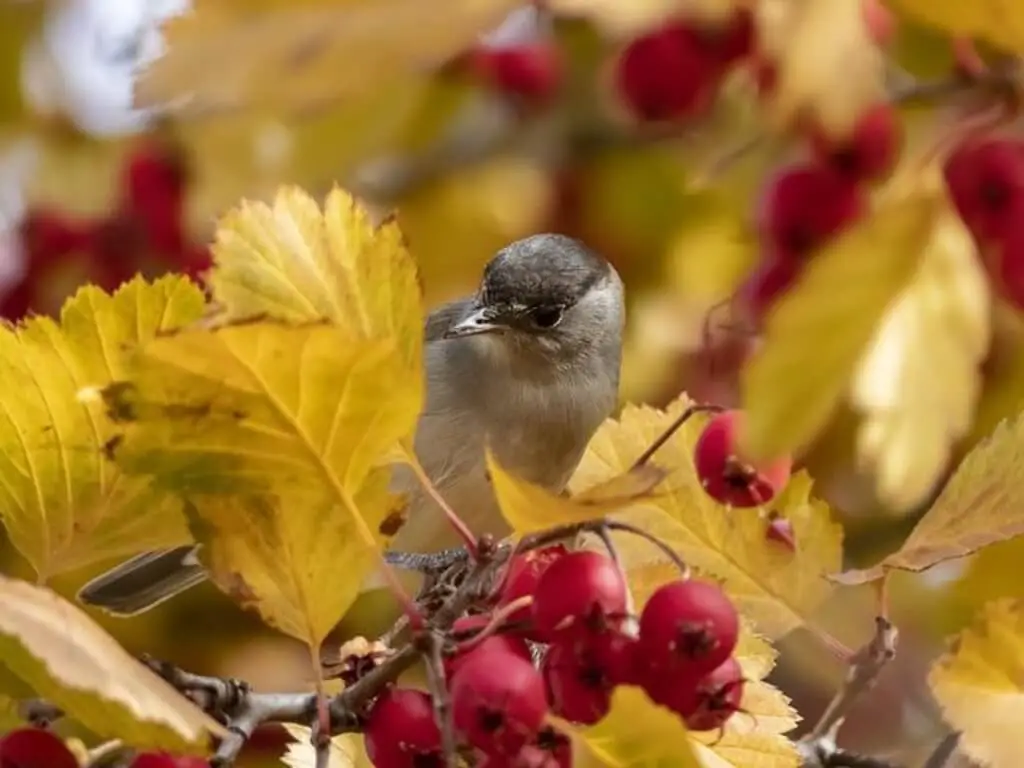Embark on a culinary adventure with 10 birds that eat hawthorn berries. From the American Robin to the Purple Finch, discover the unique habits and preferences of these winged gastronomes. Join us as we unravel the delightful tales of avian culinary delights, exploring the vital role hawthorn berries play in sustaining their lives.
Table of Contents
Hawthorn Tree’s Native to North America
| Hawthorn Species | Unique Traits |
|---|---|
| Washington Wonder | Abundant berries, orchestrating a lively bird community. |
| Downy Delight | More than aesthetics, influencing the local bird dynamics. |
| Cockspur Craftsman | Thorns as tools, crafting secure spots for avian habitats. |
Nature’s Unveiling
Hawthorn trees, proud North American natives, stand tall with heights ranging from 20 to 35 feet and a sprawling span of 20 to 30 feet. In spring, they burst into bloom, beckoning a diverse array of insects such as bees, butterflies, and beetles. These insects are lured by the blossoming flowers, playing a crucial role in pollination and contributing to the tree’s reproductive cycle.
As the seasons evolve, the hawthorn trees undergo a fascinating transformation, becoming a bountiful fall feast for our feathered companions. The rich array of insects drawn to the blossoms becomes a delectable banquet for birds, adding another layer to the intricate ecological tapestry woven by these majestic trees.
Botanical Strongholds
The thorny protection offered by many Hawthorn species unfolds a story of bird shelter and safety. These natural fortresses not only shape habitats but also serve as a secure refuge, revealing the intricate relationship between nature and its feathered inhabitants.
- Thorny Refuge: Dive deeper into the significance of thorns as a protective shield, providing birds with a secure haven.
- Architects of Safety: Explore how Hawthorn trees play a crucial role in creating safe corners for birds, fostering a sense of security.
Creating Cozy Corners
Unearth the distinctive features of Hawthorn trees, delving into their role as creators of beloved bird-friendly havens. Navigate through the intricate connection between these natural wonders and the birds they lovingly shelter.
- Avian Harmony: Discover the delicate balance and interdependence between Hawthorn trees and the diverse bird species they attract.
- Seasonal Symphony: Understand the seasonal changes that turn Hawthorn trees into dynamic hubs for avian activity.
Types of Birds That Eat Hawthorn Berries
American Robin
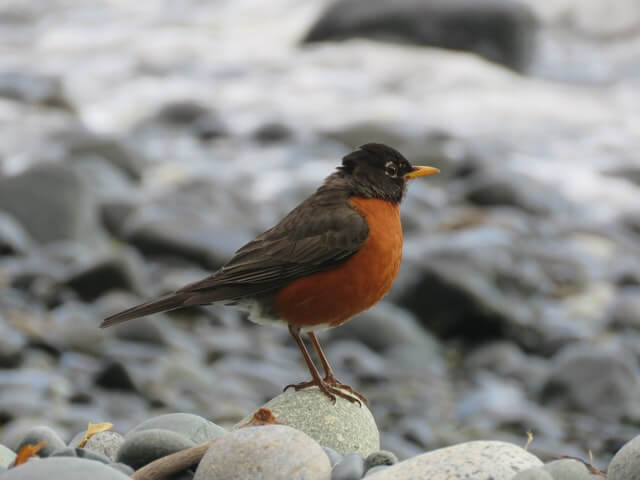
The American Robin, recognized by its distinctive red breast and brownish-gray plumage, is a common songbird across North America. From southern Canada to Central America, these birds inhabit various regions, including the eastern and central U.S. and parts of the western landscape.
Thriving in diverse habitats like gardens, parks, and woodlands, American Robins are known for their adaptability in nesting sites. While their diet primarily consists of insects, worms, and grubs, they also have a penchant for Hawthorn Berries, adding a touch of color to their nutritional repertoire. With an average length of 9 to 11 inches and a characteristic warbling song, these birds not only contribute to pest control but also bring a melodic charm to the natural surroundings.
Brown Thrasher
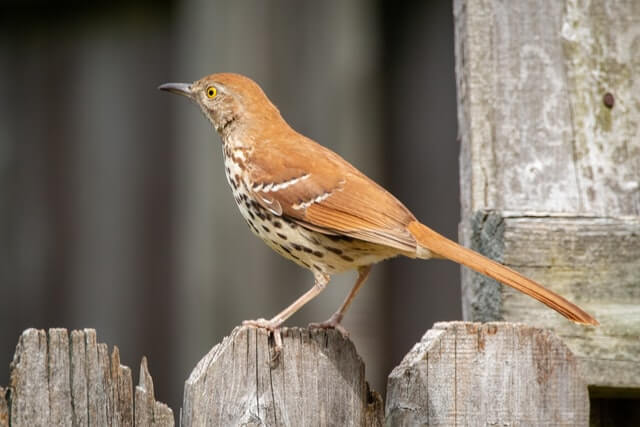
The Brown Thrasher, donned in earthy hues and boasting a distinctive speckled chest, is a soloist in North America’s avian orchestra. From the central and eastern U.S. to parts of Mexico, these birds find their niche in woodlands, thickets, and suburban gardens. Adaptable in their habitat choices, Brown Thrashers reveal their vocal prowess in dense foliage.
With an omnivorous palate that includes insects, berries, and seeds, these birds showcase a diverse culinary interest. Among their favored treats are Hawthorn Berries, adding a flavorful note to their menu. With an average length of 11 to 12 inches and a rich, varied song, Brown Thrashers bring a distinct melody to the natural landscape.
Cedar Waxwing
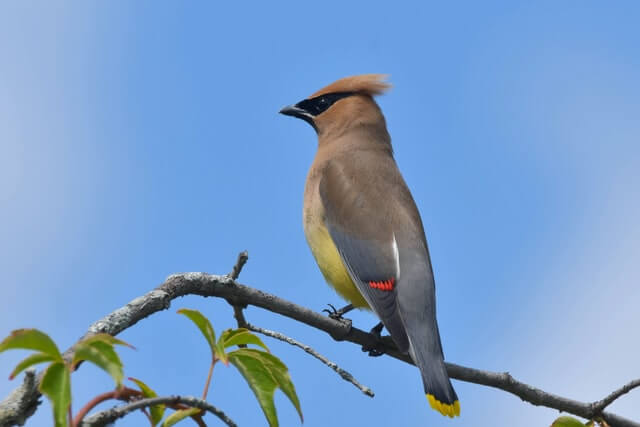
The Cedar Waxwing, a picture of elegance with silky plumage and a sleek black mask, graces North America with its avian presence. Inhabiting a vast range from southern Canada to northern South America, these birds find solace in orchards, woodlands, and even urban areas. Known for their sociable nature, Cedar Waxwings display a penchant for fruit-laden habitats.
While primarily frugivores, indulging in berries and fruit, they also partake in insects during the breeding season. Among their fruity delights, Hawthorn Berries hold a special place, contributing to their vibrant diet. With an average length of 6 to 7 inches and a high-pitched, trilling call, Cedar Waxwings bring a touch of sophistication to the avian ensemble.
Gray Catbird
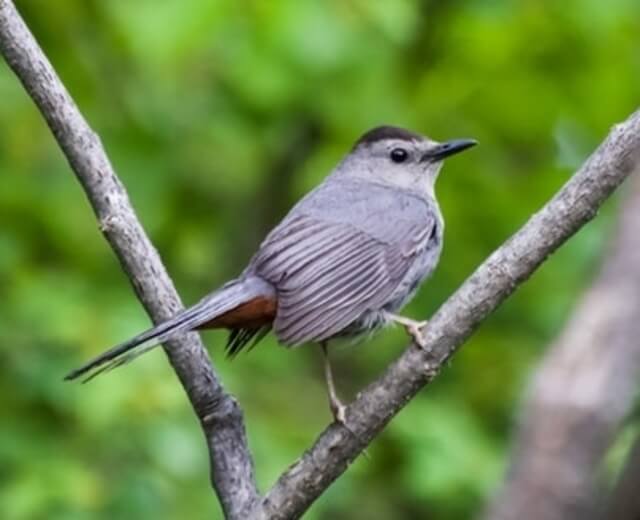
The Gray Catbird, draped in muted grays, is a virtuoso in the North American avian ensemble. Inhabiting the eastern U.S. and parts of Canada, these birds find solace in thickets, gardens, and shrubby landscapes. Renowned for their mimicry and stealthy habits, Gray Catbirds boast a diverse diet.
Preferring insects while also savoring berries and fruits, including Hawthorn Berries, these birds contribute a nuanced yet enchanting note to the avian symphony. With an average length of 8 to 9 inches and a distinctive mewing call, Gray Catbirds add an understated charm to the natural melody.
Northern Cardinal
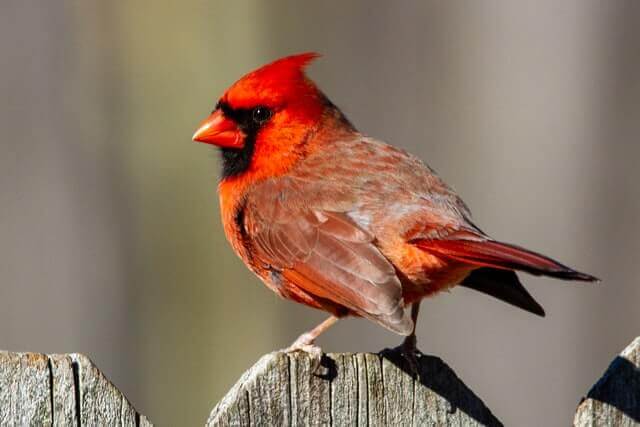
The Northern Cardinal, draped in vibrant scarlet plumage, reigns as avian royalty in North America. Spanning from southern Canada to the Gulf of Mexico, these birds find refuge in woodlands, gardens, and urban areas.
Known for their striking appearance and melodic songs, Northern Cardinals boast a diet that includes seeds, insects, and berries, with Hawthorn Berries being a notable favorite. With an average length of 8 to 9 inches and a clear, whistled call, these scarlet songsters add a regal touch to the avian serenade.
Northern Mockingbird
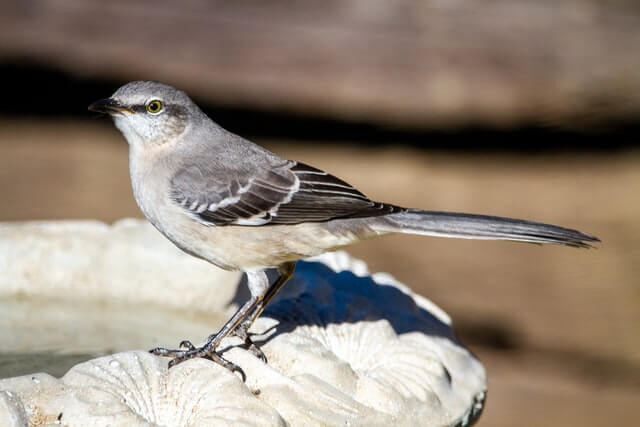
The Northern Mockingbird, with grayish-brown plumage and white-striped wings, is a familiar songster across North America. Spanning from southern Canada to Central America, these birds harmonize the landscapes of the eastern and central U.S., California, and parts of Arizona.
Thriving in diverse habitats like fields, parks, and yards, Northern Mockingbirds are primarily insectivores but showcase a fondness for Hawthorn Berries. With an average length of 8 to 10 inches and a delightful warble, these feathered musicians contribute their harmonious notes to the natural symphony.
Purple Finch
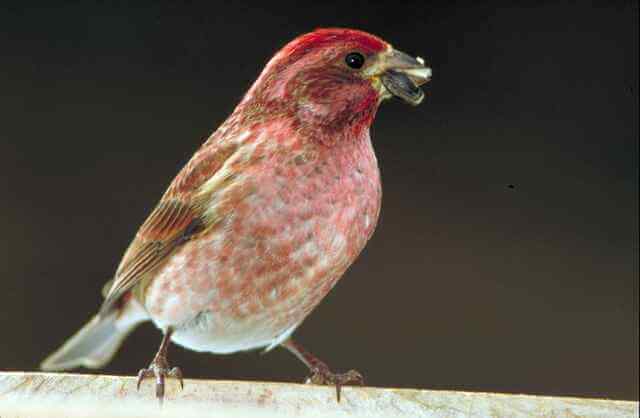
The Purple Finch, adorned in shades of crimson and raspberry, adds splashes of color to Northern landscapes. Inhabiting North America, from Canada to the western U.S., these birds find comfort in coniferous forests, gardens, and orchards. Known for their vibrant plumage and musical calls, Purple Finches have a varied diet that includes seeds, fruits, and insects.
Hawthorn Berries often make an appearance in their culinary repertoire, enhancing their colorful feast. With an average length of 6 to 7 inches and a warbling, musical call, Purple Finches bring a lively melody to the Northern avian tapestry.
Fox Sparrow
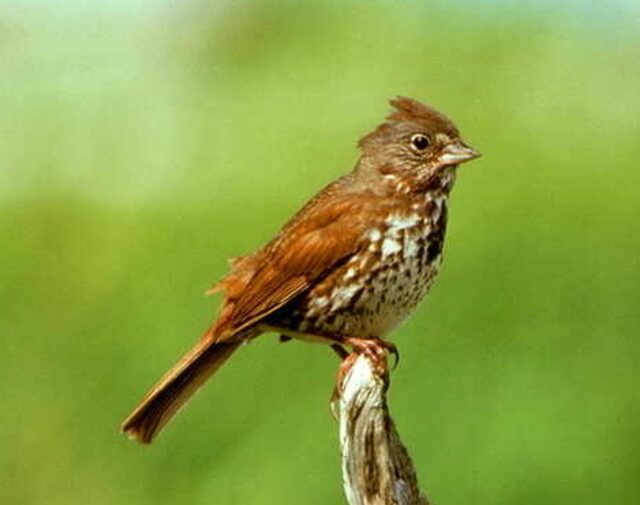
The Fox Sparrow, adorned in rustic hues and featuring bold streaks, is a ground-dwelling maestro in North American woodlands. Inhabiting regions from Alaska to the northern U.S., these birds find comfort in dense undergrowth, gardens, and forested areas. Known for their scratch-and-scratch foraging style, Fox Sparrows have a diverse diet encompassing seeds, insects, and berries.
While they primarily favor ground-level fare, the occasional indulgence in Hawthorn Berries adds a fruity note to their culinary repertoire. With an average length of 7 to 8 inches and a melodious, flute-like song, Fox Sparrows contribute a rustic charm to the woodland symphony.
Wild Turkey
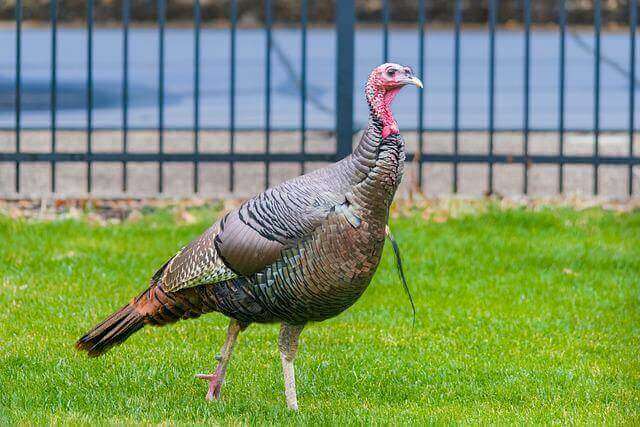
The Wild Turkey, a symbol of majesty in North American woodlands, roams across diverse habitats from Canada to Mexico. Preferring forests, fields, and open woodlands, these large birds are known for their impressive plumage and distinctive gobbling calls. Wild Turkeys are omnivores, consuming a varied diet of seeds, insects, fruits, and berries, including Hawthorn Berries.
With their grand presence and foraging prowess, these birds add a touch of wilderness majesty to the North American landscape. With an average length of 3.5 to 4 feet and a rich, gobbling call, Wild Turkeys are both regal and resonant in the avian chorus.
Ruffed Grouse
The Ruffed Grouse, a master of woodland camouflage, thrives in the northern woodlands of North America. From Canada to the Appalachian Mountains, these birds find refuge in dense forests, clearings, and shrubby areas. Known for their distinctive drumming displays, Ruffed Grouse are primarily herbivores, feasting on buds, leaves, and fruits.
The inclusion of Hawthorn Berries in their diet adds a fruity twist to their woodland banquet. With an average length of 16 to 19 inches and a drumming sound reminiscent of a distant drumroll, Ruffed Grouse are both elusive and rhythmic in the northern avian ensemble.

